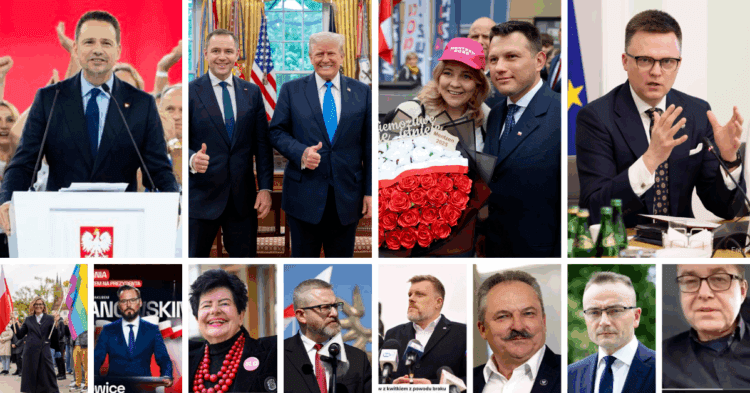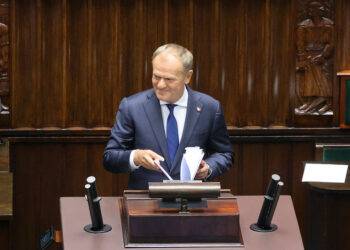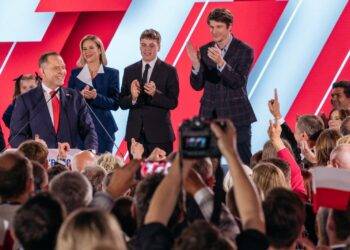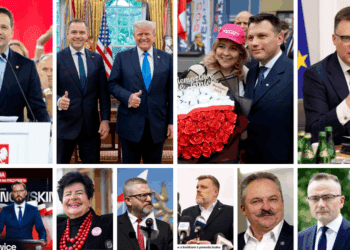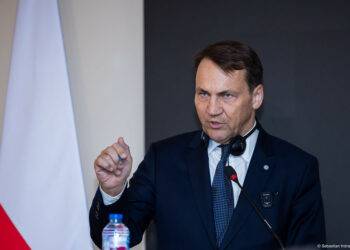Poland heads to the polls to elect its next president—a pivotal moment not only for the country’s political future but also for the stability and direction of the European Union’s eastern flank. As one of the EU’s largest member states and a strategic NATO ally, Poland’s leadership transition will reverberate far beyond its borders. For international observers, the presidential election offers a revealing snapshot of the country’s evolving identity: torn between liberal democratic values and rising national conservatism, caught between European integration and sovereign assertiveness, and shaped by both historical memory and modern geopolitical tensions.
This election comes at a time of profound transformation. Internally, Polish society remains divided over issues like judicial independence, LGBTQ+ rights, media freedom, and the role of religion in public life. Externally, Poland plays a front-line role in the West’s response to Russia’s aggression in Ukraine, hosts a growing U.S. military presence, and continues to wrestle with a complicated relationship with the European Union. The president—although not the head of government—holds significant powers over foreign policy, defense, and legislation, making this election a critical turning point.
- Poland’s Political System Explained
- Political Landscape Leading into 2025
- The Main Candidates and Their Platforms
- 1. Rafał Trzaskowski (Civic Coalition – KO)
- 2. Karol Nawrocki (Law and Justice – PiS)
- 3. Sławomir Mentzen (Confederation – KWiN)
- 4. Magdalena Biejat (The Left – Lewica)
- 5. Grzegorz Braun (Independent)
- 6. Krzysztof Stanowski (Independent)
- 7. Marek Woch (Nonpartisan Local Government Activists – BS)
- 8. Joanna Senyszyn (Independent)
- 9. Szymon Hołownia (Poland 2050 / Third Way)
- 10. Adrian Zandberg (Razem Party)
- Election Mechanics and Timeline
- Key Issues Shaping the 2025 Vote
- 1. Abortion Rights and Women’s Mobilization
- 2. Public Sentiment Toward Ukrainian Refugees
- 3. Economic Concerns and Monetary Policy
- 4. National Security and Foreign Interference
- 5. European Union Relations and Sovereignty
- 6. Political Scandals and Candidate Integrity
- 7. Energy Policy and Environmental Concerns
- What’s at Stake?
- What to Watch as the Election Unfolds
International audiences often hear about Poland through the lens of political disputes with Brussels or Warsaw’s strong support for Ukraine. But the internal dynamics driving Polish politics are often more nuanced than they appear. This guide aims to bridge that gap by offering a comprehensive, accessible overview of the 2025 presidential election: who the key players are, what’s at stake, and why the outcome matters for the region and the world.
Poland’s Political System Explained
To understand the stakes of Poland’s 2025 presidential election, it’s important to grasp how the country’s political system works—especially the unique role of the president in its semi-presidential model.
A Parliamentary Democracy with a Strong President
Poland is a parliamentary republic with a dual-executive system: power is shared between the president and the prime minister, each with distinct constitutional responsibilities. While the prime minister, appointed by the ruling parliamentary majority, holds day-to-day executive power and leads the government, the president serves as head of state and wields considerable influence in areas such as foreign policy, national security, and legislation.
Presidential Powers at a Glance
- Veto power: The president can veto legislation passed by parliament. Overriding a veto requires a three-fifths majority in the Sejm (the lower house), giving the president leverage, especially in periods of divided government.
- Foreign and defense policy: The president is the commander-in-chief of the armed forces, plays a central role in shaping foreign policy, and represents Poland internationally.
- Appointments and oversight: The president nominates key judicial and government figures (e.g., judges to the Constitutional Tribunal, heads of state institutions), often in cooperation with parliament.
- Referenda and pardons: The president can initiate national referenda and grant pardons—though the use of these powers has at times sparked controversy.
While not as powerful as the prime minister in everyday governance, the Polish president is far from a ceremonial figure. The position acts as a counterweight to parliamentary power and can steer the national agenda in key moments—especially in times of political gridlock or institutional crisis.
How the Presidential Election Works
Poland’s president is elected by direct popular vote for a five-year term, with a limit of two consecutive terms. The election uses a two-round system:
- In the first round, all candidates compete. If one receives more than 50% of the vote, they win outright.
- If no candidate achieves a majority, the top two candidates proceed to a second round (runoff), held two weeks later.
This system often encourages strategic voting and alliances, especially among opposition parties seeking to consolidate their chances in the second round.
Political Landscape Leading into 2025
The 2025 presidential election arrives at a time of deep political transition in Poland, following a dramatic reshaping of the country’s leadership and political balance in the 2023 parliamentary elections. The aftermath of that vote—and the dynamics it set in motion—will define the context in which the presidential race unfolds.
From PiS Dominance to a Divided Government
For much of the past decade, Polish politics has been dominated by the Law and Justice Party (Prawo i Sprawiedliwość, or PiS), a nationalist-conservative force that came to power in 2015. Under PiS leadership, Poland saw significant institutional changes—particularly in the judiciary and public media—sparking criticism at home and confrontations with the European Union over rule of law, press freedom, and democratic backsliding.
However, in the 2023 parliamentary elections, PiS lost its parliamentary majority. Although it remained the single largest party, it was outpaced by a coalition of pro-European, centrist, and center-left opposition forces. This coalition—led by Civic Coalition (Koalicja Obywatelska), Third Way (Trzecia Droga), and The Left (Lewica)—formed a new government under the premiership of Donald Tusk, a former prime minister and European Council president. The result is a cohabitation scenario: a pro-European government operating alongside a president (Andrzej Duda) who was elected under the PiS banner.
Duda’s second term ends in 2025, and he is constitutionally barred from running again. His successor could either reinforce the new government’s reform efforts or act as a conservative bulwark, continuing the PiS legacy from the presidential palace.
Ideological Polarization and Political Fatigue
Poland’s political environment remains intensely polarized, with public discourse often framed as a battle between two incompatible visions of the country:
- One rooted in traditional values, national sovereignty, and skepticism toward liberal internationalism (often associated with PiS and right-wing forces), and
- Another favoring democratic pluralism, closer EU integration, and social progressivism (driven by the opposition bloc now in power).
Yet amid this division, there are signs of voter fatigue and realignment, especially among younger and urban voters who are disillusioned with entrenched party politics. Smaller parties and independents—such as the center-right Third Way or the far-right Confederation (Konfederacja)—are trying to capitalize on this discontent.
A Tense but Pivotal Moment
As Poland heads toward the presidential vote, the key question is whether the electorate will opt for continuity or change. Will the presidency remain a stronghold of conservative-nationalist politics, potentially clashing with the government? Or will a more centrist or liberal president emerge, enabling a realignment of Poland’s domestic and foreign policy?
This uncertainty makes the 2025 election not just a routine democratic exercise but a critical inflection point—one with significant implications for the future of Polish democracy, the European project, and regional stability.
The Main Candidates and Their Platforms
Poland’s 2025 presidential election features a diverse array of candidates, reflecting the nation’s multifaceted political landscape. The official list, confirmed by the National Electoral Commission, includes 13 candidates vying for the presidency. Below is an overview of the most prominent contenders:
1. Rafał Trzaskowski (Civic Coalition – KO)
Currently serving as the Mayor of Warsaw, Trzaskowski is the candidate for the centrist Civic Coalition. He previously ran for president in 2020, narrowly losing in the second round. Trzaskowski advocates for:
- Strengthening Poland’s ties with the European Union
- Restoring judicial independence
- Advancing civil liberties, including LGBTQ+ rights
- Addressing climate change through sustainable policies
2. Karol Nawrocki (Law and Justice – PiS)
A historian and head of the Institute of National Remembrance, Nawrocki is the candidate for the conservative Law and Justice party. His platform emphasizes:
- Preserving traditional Polish values and national identity
- Skepticism towards deeper EU integration
- Continuing judicial reforms initiated by PiS
- Prioritizing national sovereignty in policymaking
3. Sławomir Mentzen (Confederation – KWiN)
Leader of the libertarian-nationalist Confederation party, Mentzen appeals to younger, right-leaning voters. His key positions include:
- Implementing flat tax reforms and reducing government intervention
- Opposing EU centralization efforts
- Promoting traditional social values
- Advocating for cryptocurrency adoption, including Bitcoin reserves
4. Magdalena Biejat (The Left – Lewica)
A senator and social activist, Biejat represents the progressive Left party. Her campaign focuses on:
- Expanding social welfare programs
- Ensuring reproductive rights and gender equality
- Combating climate change through green initiatives
- Enhancing workers’ rights and labor protections
5. Grzegorz Braun (Independent)
Formerly affiliated with the Confederation party, Braun is running as an independent candidate. Known for his far-right views, his platform includes:
- Strong opposition to immigration and multiculturalism
- Advocacy for traditional Catholic values
- Criticism of EU influence on Polish sovereignty
- Controversial stances on public health and education policies
6. Krzysztof Stanowski (Independent)
A journalist and media entrepreneur, Stanowski is a political newcomer. His candidacy is characterized by:
- A focus on transparency and anti-corruption measures
- Leveraging digital platforms for civic engagement
- Appealing to younger, urban voters seeking alternative voices
- Emphasizing the importance of media freedom
7. Marek Woch (Nonpartisan Local Government Activists – BS)
Representing the Nonpartisan Local Government Activists, Woch’s platform centers on:
- Decentralizing government authority to empower local administrations
- Implementing term limits for elected officials
- Reforming the national healthcare system
- Establishing a national guard for internal security
8. Joanna Senyszyn (Independent)
A former Member of the European Parliament and academic, Senyszyn is running as an independent with a progressive agenda, focusing on:
- Advancing women’s rights and gender equality
- Promoting secularism in government affairs
- Enhancing educational reforms
- Strengthening Poland’s commitment to EU values
9. Szymon Hołownia (Poland 2050 / Third Way)
Szymon Hołownia, Speaker of the Sejm and leader of the centrist Poland 2050 movement, is running as the candidate of the Third Way coalition. His platform includes:
- Strengthening Poland’s role in the EU and NATO
- Advocating for judicial independence and rule of law
- Promoting environmental sustainability and renewable energy
- Supporting civil unions for same-sex couples
- Emphasizing decentralization and empowering local governments
- Proposing increased healthcare funding and reforms
10. Adrian Zandberg (Razem Party)
Adrian Zandberg, co-leader of the left-wing Razem party, is running on a platform focused on social justice and economic equality. His key proposals include:
- Expanding public investment in healthcare and education
- Implementing progressive taxation to address income inequality
- Advocating for workers’ rights and stronger labor protections
- Promoting environmental policies aimed at climate neutrality
- Strengthening public transportation and infrastructure
These candidates represent the broad ideological spectrum present in Polish politics, from conservative nationalism to progressive liberalism. As the election approaches, their campaigns will address key issues such as Poland’s role in the EU, judicial reforms, social policies, and national security.
Election Mechanics and Timeline
Poland’s 2025 presidential election is a pivotal event, marking the end of President Andrzej Duda’s second term. The election process is structured to ensure democratic legitimacy and transparency. Below are the key details:
Election Schedule
- First Round: Sunday, 18 May 2025
- Polling stations will be open from 7:00 a.m. to 9:00 p.m. local time.
- If a candidate secures more than 50% of the valid votes, they will be elected president outright.
- Second Round (Runoff): Sunday, 1 June 2025
- If no candidate achieves a majority in the first round, the top two candidates will compete in a runoff two weeks later.
- Inauguration: August 6, 2025
- The newly elected president will be sworn in on this date, marking the official start of their five-year term.
Voting Eligibility and Process
- Eligibility: All Polish citizens aged 18 or older on election day are eligible to vote.
- Voting Abroad: Polish citizens residing abroad can vote at designated polling stations, such as embassies and consulates. For instance, in the United States, voting will take place on Saturday, 17 May 2025, due to time zone differences.
- Voting Methods: Voting is conducted using paper ballots. Electronic voting is not utilized, ensuring a tangible audit trail.
Election Oversight and Transparency
- Supervising Body: The National Electoral Commission (Państwowa Komisja Wyborcza – PKW) oversees the election process, ensuring compliance with electoral laws and regulations.
- International Observation: The Organization for Security and Co-operation in Europe (OSCE) has deployed a Limited Election Observation Mission (LEOM) to monitor the election. The mission will assess various aspects, including campaign activities, media coverage, and the overall electoral environment.
Campaign Regulations
- Campaign Period: The official campaign period commenced following the announcement of the election date.
- Spending Limits: Candidates are subject to spending limits to ensure a level playing field.
- Media Access: Public and private media outlets are required to provide equal airtime to all registered candidates, promoting fair exposure.
Security Measures
- Cybersecurity: Given concerns about potential foreign interference, particularly from Russian entities, Poland has implemented robust cybersecurity measures to protect the integrity of the election.
- Election Monitoring: Both domestic and international observers will monitor the election to ensure transparency and address any irregularities promptly.
Key Issues Shaping the 2025 Vote
Poland’s 2025 presidential election is unfolding against a backdrop of significant political, social, and economic transformations. The campaign has brought to the forefront several pivotal issues that are influencing voter sentiment and the nation’s future trajectory.
1. Abortion Rights and Women’s Mobilization
The near-total abortion ban implemented under the previous Law and Justice (PiS) government remains a contentious issue. Despite promises from Prime Minister Donald Tusk’s administration to liberalize abortion laws, progress has been limited, leading to disillusionment among women’s rights activists. This sense of betrayal has dampened enthusiasm among female voters, potentially impacting voter turnout and benefiting conservative candidates like Sławomir Mentzen, who staunchly opposes abortion and LGBTQ+ rights.
2. Public Sentiment Toward Ukrainian Refugees
Poland’s initial open-door policy toward Ukrainian refugees following Russia’s 2022 invasion garnered widespread public support. However, by late 2024, support had declined from 94% to 57%, influenced by economic strains and political rhetoric. Candidates like Karol Nawrocki have emphasized prioritizing Polish citizens in accessing public services, while far-right figures have blamed Ukrainian refugees for straining resources and inflating housing prices. Despite these challenges, many Ukrainians continue to contribute positively to the Polish economy.
3. Economic Concerns and Monetary Policy
Economic issues, including inflation and housing shortages, are central to the election discourse. The National Bank of Poland’s recent interest rate cut from 5.75% to 5.25% reflects efforts to stimulate the economy amid slowing growth. Prime Minister Tusk has advocated for such measures, while opposition figures like Nawrocki criticize the government’s economic policies, pledging increased investment in infrastructure and social programs.
4. National Security and Foreign Interference
Poland has accused Russia of attempting to interfere in the presidential election through disinformation campaigns and cyberattacks targeting critical infrastructure. The government has heightened cybersecurity measures in response to these threats. Candidates’ stances on national security vary, with some advocating for stronger ties with NATO and the EU, while others promote a more nationalist approach.
5. European Union Relations and Sovereignty
The relationship between Poland and the European Union remains a divisive topic. While candidates like Rafał Trzaskowski support deeper EU integration and adherence to democratic norms, others, such as Sławomir Mentzen, express skepticism toward the EU, criticizing initiatives like the European Green Deal and advocating for national sovereignty.
6. Political Scandals and Candidate Integrity
The campaign has been marked by scandals affecting candidates’ credibility. Karol Nawrocki faced backlash over allegations of exploiting an elderly pensioner in a property deal, leading to a decline in his poll numbers. Such controversies have influenced public perception and could impact election outcomes.
7. Energy Policy and Environmental Concerns
Energy independence and environmental policies are significant issues in the election. Candidates differ in their approaches, with some advocating for renewable energy investments and others emphasizing traditional energy sources and criticizing EU environmental regulations. These positions reflect broader debates on balancing economic growth with environmental sustainability.
What’s at Stake?
Poland’s 2025 presidential election is more than a routine transfer of power — it is a referendum on the country’s political trajectory, institutional integrity, and role within Europe and the wider world. The presidency, while not the head of government, is a powerful office with the capacity to accelerate reforms, block legislation, shape foreign policy, and influence Poland’s democratic direction. For many voters, the election represents a stark choice between competing visions of the state.
A Powerful Political Arbiter
Although Poland is a parliamentary democracy, the president holds a strong constitutional position, serving as a check on the legislative and executive branches. Whoever wins the presidency in 2025 will have the authority to:
- Veto parliamentary bills, including judicial and economic reforms;
- Appoint key figures to institutions like the Constitutional Tribunal and Supreme Court;
- Shape foreign and defense policy in collaboration with the government;
- Represent Poland internationally, including at EU and NATO summits;
- Issue pardons and initiate referenda, which can be used to bypass parliamentary deadlock or rally public support.
In a period of political pluralism — with the current government led by the centrist-liberal Civic Coalition and its allies — the president’s role could either harmonize or paralyze the reform agenda, depending on their ideological alignment.
Institutional Renewal vs. Entrenched Division
If a candidate from the current pro-European coalition wins (e.g. Trzaskowski, Hołownia, or Zandberg), Poland could enter a period of institutional repair and democratic stabilization. That could include:
- Reversing controversial judicial appointments made under the previous PiS government;
- Rebuilding trust in public broadcasting and depoliticizing oversight bodies;
- Smoothing relations with the European Commission, unblocking withheld EU funds;
- Advancing civil rights protections, particularly for women and LGBTQ+ communities.
Conversely, a victory for nationalist or far-right candidates (e.g. Mentzen, Nawrocki, or Braun) would likely lead to continued confrontation between the presidency and parliament. In such a scenario, the president could use their veto to halt liberal reforms and act as a counterweight to the current government, potentially resulting in legislative gridlock.
Poland’s European Path
The presidency will also shape Poland’s approach to the European Union. The outgoing President Andrzej Duda largely mirrored the eurosceptic stance of the PiS government. His successor’s posture will determine whether Poland:
- Fully reintegrates into the EU mainstream, aligning with Brussels on rule of law, environmental policy, and foreign affairs;
- Pursues a more assertive, sovereigntist approach, resisting further integration and seeking bilateral influence;
- Or walks a centrist path, trying to preserve national interests while cooperating with EU partners.
This is crucial not only for Poland’s domestic development but also for the EU’s broader cohesion, especially as it faces challenges ranging from security to democratic backsliding in other member states.
Implications for Ukraine and NATO
As a frontline state in the context of the Russia-Ukraine war, Poland plays an outsized role in European security architecture. The president’s stance on:
- Military cooperation with NATO allies;
- Defense spending and procurement;
- Support for Ukraine and sanctions on Russia;
will have ripple effects far beyond Poland’s borders. A strong transatlantic-oriented president could reinforce Poland’s leadership in regional security. A more nationalist or isolationist president could complicate coordination with allies and diminish Poland’s strategic leverage.
A Referendum on Values and Democracy
Ultimately, the election is a referendum on what kind of democracy Poland wants to be. The key divides are not only political but philosophical:
- Open society vs. national tradition
- Secular pluralism vs. religious conservatism
- Multilateralism vs. sovereignty-first politics
For many voters, especially younger ones, the presidency is about restoring dignity to public life and asserting a future-oriented identity for the nation.
What to Watch as the Election Unfolds
Poland’s 2025 presidential election is shaping up to be one of the most consequential political moments in the country’s post-communist history. With the outcome still uncertain and the stakes high, both Polish citizens and international observers are watching closely for signs of the direction the country will take — politically, socially, and geopolitically — in the years to come.
A High-Stakes Contest with Global Implications
At its core, this election is about more than choosing a head of state. It is about deciding the future of:
- Poland’s democracy and the resilience of its institutions;
- Its place within the European Union and the rules-based international order;
- The pace and scope of domestic reforms, including on the judiciary, media, and civil rights;
- How Poland will navigate complex regional challenges, from Russian aggression to migration and economic volatility.
Whether voters opt for continuity with nationalist-conservative governance or shift toward liberal or centrist leadership will shape how the country engages with both its citizens and its allies.
Key Indicators to Watch
As election day approaches, here are the most important dynamics to monitor:
- Polling trends and voter turnout, especially among young people, women, and first-time voters;
- Debate performance, which may sway undecided voters in a crowded field;
- Media coverage and fairness, particularly from public broadcasters following recent reforms;
- Foreign influence risks, especially from Russian disinformation or cyberattacks;
- Diaspora engagement, with Polish communities abroad playing a larger role than ever before;
- Runoff potential, as few candidates are expected to win outright in the first round.
Final Thoughts for International Readers
For readers outside Poland, this election is an opportunity to understand how a key EU and NATO member is grappling with the same forces seen across the democratic world: populism, polarization, digital disruption, and competing visions of national identity. Poland’s political choices will influence not only its domestic future but also the cohesion of the European project and the credibility of the democratic model on the global stage.
As the campaign accelerates, the world is watching — not only to see who wins, but what kind of Poland will emerge on the other side.

